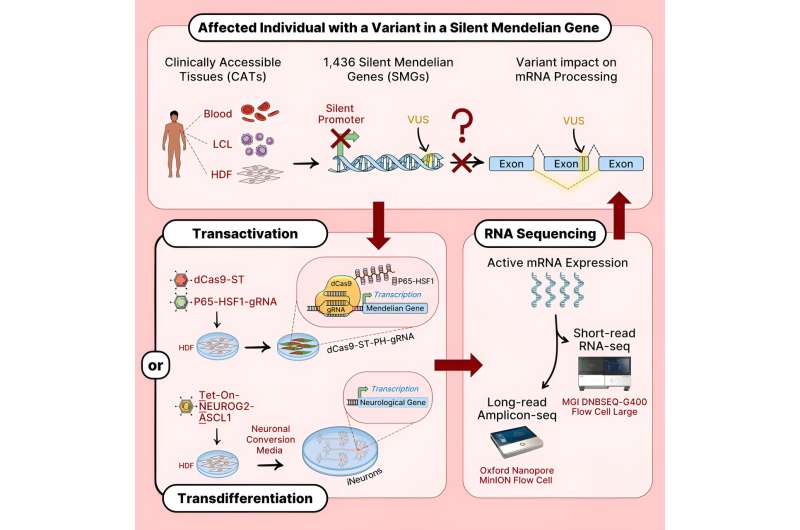This article has been reviewed according to Science X's editorial process and policies. Editors have highlighted the following attributes while ensuring the content's credibility:
fact-checked
peer-reviewed publication
trusted source
proofread
Skin may hold key to neurodevelopmental disorder diagnoses

A genetic diagnostic method using a small sample of skin from the upper arm could identify rare neurodevelopmental disorders in a non-invasive way, according to researchers at the University of Adelaide.
Currently, conditions caused by a significant disruption during brain development, like Rett Syndrome, epilepsy and Down Syndrome, affect 1 in 50 Australian children.
But there are around 6,000 rare disorders, many of which don't have names as they are defined more by symptoms or the genetic variations that cause them.
A team at the Robinson Research Institute led by Dr. Lachlan Jolly, Head of the University of Adelaide's School of Biomedicine's Neurobiology Research Group, and Professor Jozef Gecz, Head of the School of Medicine's Neurogenetics program, have developed a way to transcribe genetic variations into RNA to help determine if they are disease causing and therefore improve genetic diagnosis.
These findings, as part of the PERSYST Study, have been published in The American Journal of Human Genetics.
"A genetic diagnosis is a prerequisite to appropriate care, therapies, clinical trials, family planning and importantly, a community of belonging and support," said Dr. Jolly.
"What we've been able to do is activate the expression of brain disease genes in cells derived from a patient's skin biopsy grown in the laboratory to obtain the gene's RNA transcript; previously this would have only been possible through a sample of patient brain tissue, which is rarely available or advisable," said Dr. Jolly.
"Activating the disease genes in skin cells enables a functional RNA based study to resolve the pathology of the genetic variant. Such individuals would otherwise often never receive a genetic diagnosis because the gene's RNA is unobtainable without highly invasive procedures.
"Variants in these genes account for 22.2% of all variants of uncertain pathology, which currently equates to hundreds of thousands of people world-wide living without a diagnosis, and that number continues to rise."
This breakthrough approach underpins the PERSYST study, a national collaboration between scientists, clinicians, diagnostic laboratories and rare disease community groups across Australia. The PERSYST study, which currently runs until 2027, utilizes this new skin-based diagnostic technology and has a national recruitment program for a subset of individuals living with a genetically undiagnosed rare disease.
"PERSYST is providing the critical evidence to support the genetic diagnosis of Australian individuals and their families, ending the burden of their diagnostic odysseys and providing opportunities for better care, support, and access to precision treatments," said Dr. Jolly.
More information: Emmylou C. Nicolas-Martinez et al, RNA variant assessment using transactivation and transdifferentiation, The American Journal of Human Genetics (2024). DOI: 10.1016/j.ajhg.2024.06.018





















